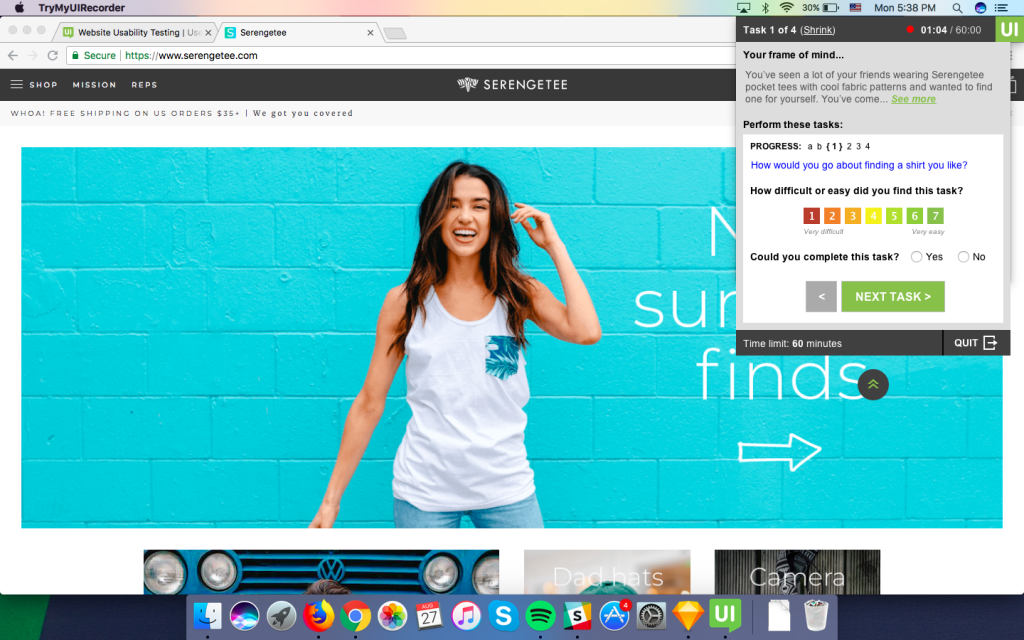We all know the trouble of introducing new concepts into an established company or work environment. When it comes to UX designers convincing stakeholders of the value of UX, well… the immediate rationale seems anecdotal at best for many. So how can you make the argument for something we know is true?
Here are 4 great ways to demonstrate the value of UX to anyone!

1. When in doubt, take the ROI route
Return on investment, or ROI, is perhaps the universal language for many, especially older, companies. Many stakeholders want to know the expected return on any investment they choose to make, and really, that is how business has been done since the beginning of time.
Luckily for UX designers, there is convincing science and data behind the anecdotal rationale.
We recommend consulting established statistics from sources such as:
- The Forrester Customer Experience Index
- These 72 case studies from the Nielsen-Norman Group
- This great reference post from HubSpot
Let’s talk about conversion rate and value of UX
Perhaps the most obvious UX metric, especially for e-commerce sites, is the conversion rate. Most companies should already be tracking this every which way from Sunday, which makes testing UX that much easier.
A/B testing to calculate the return on investment, and therefor the value, of UX is extremely simple for websites and for mobile apps. By running iterative tests, you can accurately measure causation between tweaks to your UX and user behavior, extrapolating a clear connection to conversion optimization rate.
And the best part is that you don’t even need to pull the trigger on live redesigns. Most usability testing platforms, like us, can test prototypes and wireframes of websites and apps!
What else can usability testing do besides refine e-commerce UX?
Drop off rates measures the number of users who did not complete any conversion goals on your site or app. Usability testing is the only reliable way to uncover the pain points causing users to drop off.
With usability testing, you can see both the qualitative evidence (via live video) and the quantitative metrics (time of task, single-ease questionnaire, and task completion percentage) to hone in on areas of opportunities.
A good user flow can earn a company lots of money, not only by increasing profitable conversions, but also by decreasing costly ones. For example, in 2006, McAfee cut their support call volume by 90% by redesigning their website’s support user flow.
Think of how much time and effort that saved McAfee as a result of a UX tweak!

2. Reference other businesses / industry leaders
It’s a basic fact that successful people are thought of as being insightful thinkers to idolize and take cues from. Everyone who has ever won an award, prevailed over insurmountable odds, or been the protagonist of a rags-to-riches story has a memoir to write and a soapbox to stand upon.
The same is true for companies.
Here are some quick and dirty stats to really excite people:
- Lead with something the UX industry loves to refer to, like how Jeff Bezos invested 100x more in UX than in marketing for the first year of Amazon. In fact, Jared Spool projects that a small change to the UI of Amazon has contributed nearly 3 billion in revenue to the website!
- IBM states that every $10 spent on UX results in $100 of profit
- Staples increased revenue from e-commerce transactions by 500% after a major UX overhaul
With TryMyUI specifically, one of our greatest success stories led to an 85% increase of conversion rates, a 147% increase in revenue, and a 29% increase in value. That’s the power of investing in e-commerce UX!
Read other success stories here: UXspresso: Shots of design thinking

3. Negotiate small upfront cost to prove long term value of UX
A major hurdle many companies face with UX research and usability testing is the cost, especially for companies unfamiliar with or unsure of the process. Most usability testing platforms demanding annual contracts and large sums of money upfront, small, medium, or even some large-sized business can become hesitant of wasting money.
We have encountered this numerous times over the years. A UX designer comes to us, has trouble convincing their stakeholders that usability testing is worth it, and quietly goes back to work, flying essentially blind.
But this is actually a great opportunity for you to not only demonstrate the value of UX, but demonstrate your own value as an engaged and forward-thinking employee as well. For only $99, you can get access to our Personal Plan, complete with 5 credits (a $225 value), task usability, videos, and up to 60 stored tests!
With just 5 user tests, you will uncover 80% of your usability issues.
Read more: Ready Researcher One: A guide to quantitative UX research & user testing

4. Just do it on your own, with us, for free!
Sometimes, seeing really is believing. And with remote usability testing, sharing what you see and believe has never been easier. Some stakeholders, who still use “GUI” to refer to user experience and user interface as if it’s a catch-all will never greenlight something like this.
Try running a FREE USER TEST, WITH ALL FEATURES on our platform. Our free trial is 2 weeks of Enterprise-level features with a free panel credit, and doesn’t require anything beyond a valid work email address! We want to give UX designers as much ammunition as possible to further the field and continue to develop the best possible experience in every instance imaginable.
We have resources all over our website and blog to help get you setup quickly and have results to you within hours!
Take a short lunch to make a lasting impact today!




